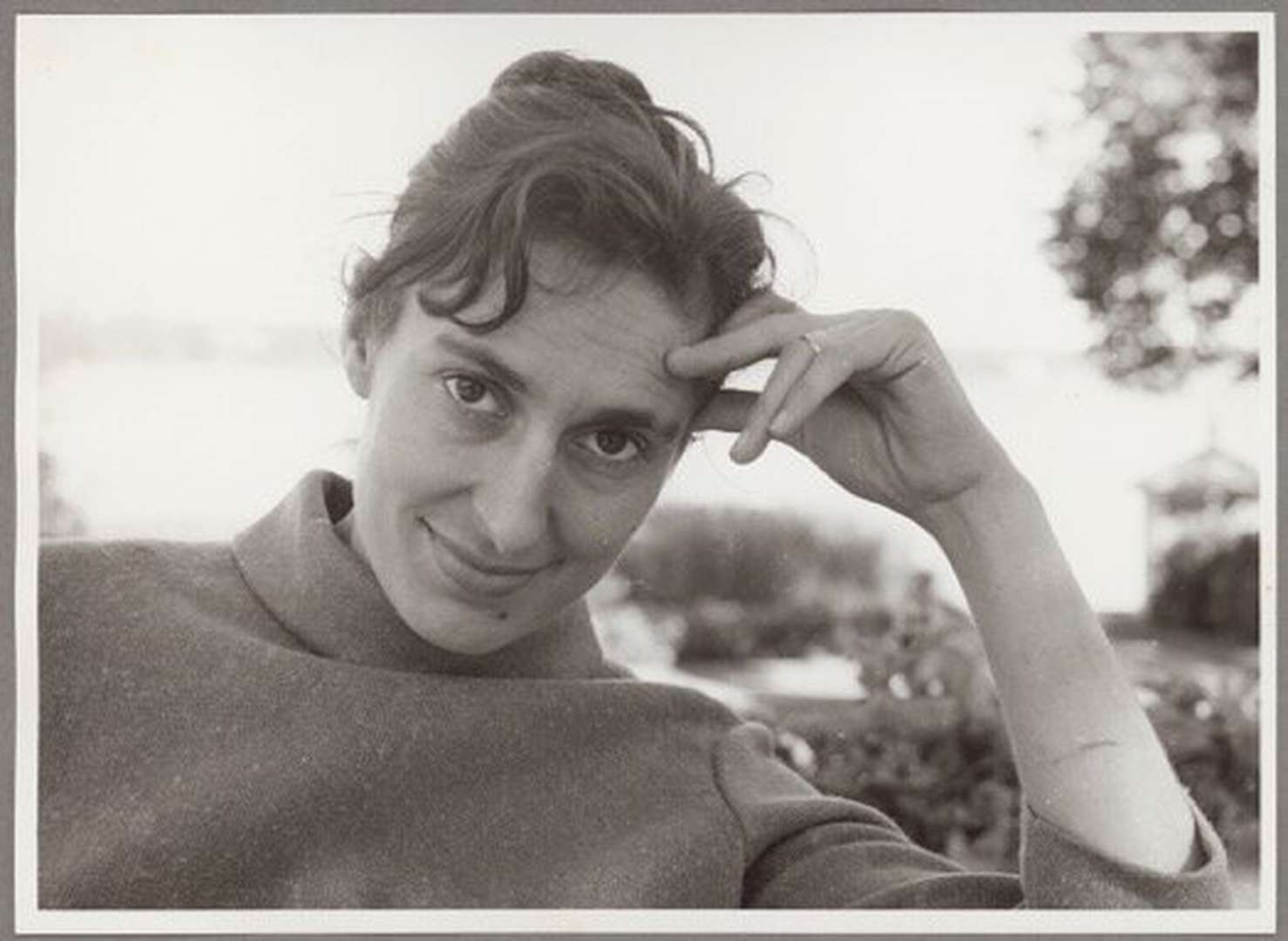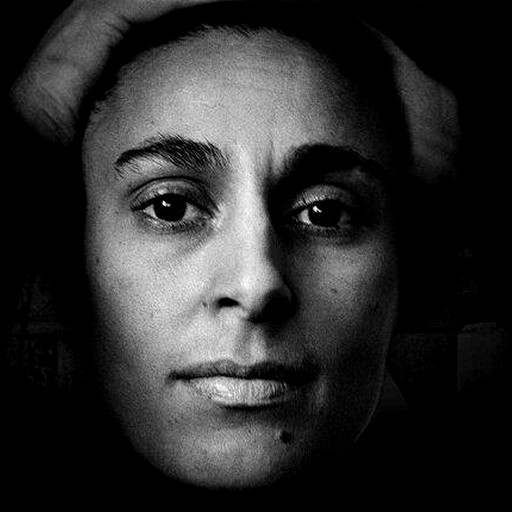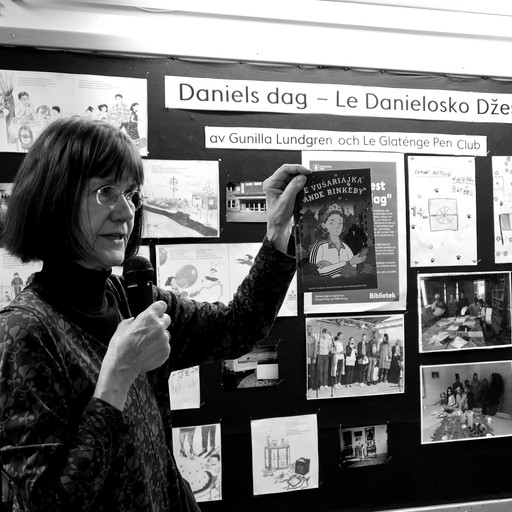In older books in Sweden, the depiction of Roma is subject to many prejudices. This all changed in 1963 when the Romani writer and activist Katarina Taikon published her first book, Zigenerska [Gypsy woman], in which the life of Roma in Sweden is described for the first time from within the group. Later Katarina Taikon wrote for children as she thought this would be the best way to combat prejudices. In 1969 her first autobiographical book about Katitzi was published; thirteen more books followed between1969 and1980. All these books were very successful and continue to appear in new editions.
Romani Literature in Sweden

Katarina Taikon (Katharina Maria Taikon, Katarina Taikon-Langhammer, 1932–1995), Kaldarash Romni and the sister of the jeweller Rosa Taikon, …
Katarina Taikon’s importance cannot be stressed enough, even though there are now other Romani writers in Sweden. Since 2010 there has also been a Romani publisher, ERG Förlag, where editor Fred Taikon publishes books on Romani issues. In Sweden there are many Romani writers writing in different dialects:
Monica Caldaras wrote her first book, Jävla Zigenarunge [Damn Gypsy kid], an autobiography, in 1973. Ten years later, in 1983, she published Zigenarmor berättar [The stories of a Gypsy mother], a collection of traditional Romani tales in Swedish and Romani co-authored by Dragan Caldaras and illustrated by Håkan Bull.
In 2010 Ramona Taikon Melker, in cooperation with the photographer Ann Eriksson, published Marie-Claude – Jekh Romani šej / Marie-Claude – en romsk tjej [Marie-Claude – a Romani girl], a book of photographs with accompanying text in Romani and Swedish. In 2015 a second book was published, Adrianas val [Adriana’s choice], which describes a young Romani girl’s journey from teenage years to adulthood.
In 2004 Armas Lind, a Finnish Rom who lives in Sweden, published his autobiography Caleb.
Berith Kallander’s book Min mor, fånge Z.-4517 [My mother, Prisoner Z.-4517] tells the story of her mother’s suffering during the Second World War.
In 2002 Mikael Demetri and Angelina Dimiter Taikon published Pay źuvindó: Romané sityarimáta hay divánóri / Vishetens brunn: romska ordspråk och talesätt [The well of wisdom – Romani proverbs and tales].
Domino Kai’s book Maritza & Sebastian (2005) is a story about a Swedish-Finnish Kalé-Romani family. It includes texts in Kalé, Finnish and Swedish.
In 2015 Domino Kai cooperated with the photographer Anders Ryman in Romska roster [Romani voices], in which a number of Roma from various groups in Sweden speak about their lives and dreams.
Hans Caldaras, a famous Romani singer, published his autobiography, I betraktarens ögon [In the eyes of the observer], in 2002. It was immediately successful and was reprinted in 2015.
In 2013 the prize-winning novel 5768 visningar på YouTube [5,768 views on YouTube] by Ralf Novák-Rosengren and Anita Santesson was published. It tells the story of Rosita, a young girl in a Traveller-Romani family who dreams of becoming an artist.
Another Swedish Traveller-Rom is Bennie Åkerfeldt, writer, educator and storyteller. His show Resandeblod [Traveller ́s blood] has been touring Sweden and Norway since 2008. As of 2017 Åkerfeldt had written sixteen books, including Romer i Europa [Roma in Europe] (2012), all of which are published by Förlagstryckeriet Vitterleken.
Badbomber och simhopp [Water bombs and diving] by Marin Salto and Marcus Gunnar Pettersson is part of a series of three children’s books all of which have been published in Swedish, Arli, Kalé, Kelderaš, Lovari and Traveller-Romani.
Vi läser om romer [We read about Roma] is a photograph-illustrated book in which nine young Roma interview their older relatives. It was published in 2014 and contains a factual section with parallel texts in Swedish and Romani. Amanda Eriksson provided the illustrations.
As of 2017, Gunilla Lundgren had written fifteen books in cooperation with young and old Roma. Utan hus utan grav – Bi kheresko bi limoresko [Without home without grave] is a collection of Romani poems and songs in twenty-two dialects. It contains outstanding photographs by Josef Koudelka, Henri Cartier-Bresson and Jeremy Sutton, together with photographs from private photograph albums.
Svarta rosor – Kale Ruze, romsk litteratur, kultur och historia [Black roses – Romani literature, culture and history] (2003) presents twelve Roma writers from Poland, Sweden, Finland, Norway, Belarus, Macedonia, Slovakia, England, Switzerland and Spain. The texts are presented both in Swedish and in the various dialects of the writers.
Gunilla Lundgren (b. 1942) is a Swedish writer who started working with Roma in the late 1960s as a teacher of Romani students. She wrote her …
In 2004 Sofia Z-4515 was published by Gunilla Lundgren and Sofia Taikon with illustrations by Amanda Eriksson. This graphic novel for readers both young and old tells the story of Sofia Taikon’s life. It won the prestigious ‘Artists against Nazis’ prize in 2006. Sofia was just a child when she was deported to Auschwitz; she survived the camp and went to Sweden in a Red Cross bus. The book is written in Swedish and has been translated into Romani, English and Romanian. It has been reprinted several times by different publishers.
Thom Lundberg’s För vad sorg och smärta [For what sadness and pain] (2016) drew considerable attention. It discusses travelling people in an accessible and important way.
Rights held by: Gunilla Lundgren | Licensed by: Gunilla Lundgren | Licensed under: CC-BY-NC-ND 4.0 International | Provided by: RomArchive






